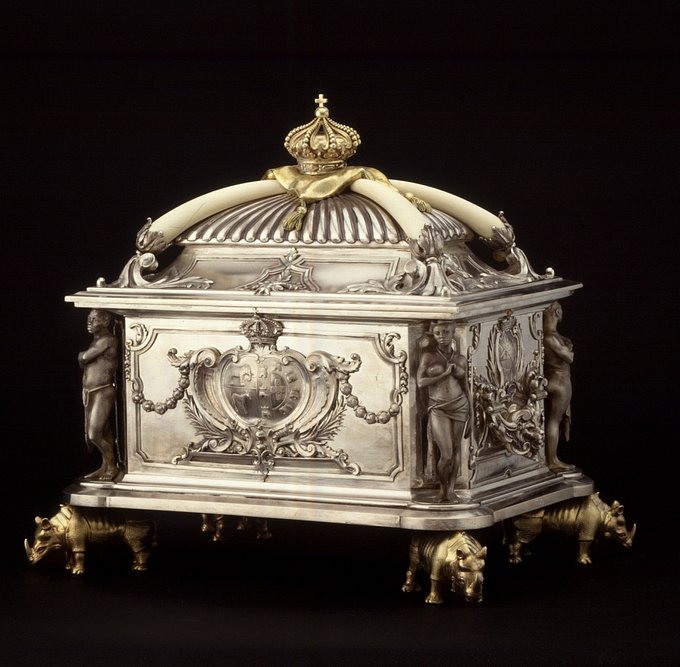The origins of the Leitão trade date back to 1822, when José Pinto Leitão established the traditional workshop at Rua das Flores, the goldsmith’s street in the city of Oporto. Work was carried out in sight of customers and production focused mainly on jewellery articles of a regional, traditional nature, with predominant use of filigree.
The founders’ sons succeeded him in running the business, trading as Leitão & Irmão. In the national production scenario the business stood out relative to congeneric businesses, José Rosas and Reis & Filhos establishments. The technical expertise of its artisans and the quality of their creations were publicly acknowledged when King Pedro, Emperor of Brazil, entrusted Leitão & Irmão with the prestigious position of «Goldsmith to the Imperial House of Brazil».
In 1877 the Leitão brothers opened a luxury branch in Lisbon and undertook the ambitious artistic project to reinstate the great traditions of goldsmithery and jewellery, taking some inspiration from Portuguese popular roots. In doing so they were following the historicist spirit that presided over the creations of national goldsmith workshops of that time, thus decisively contributing to the renovation accomplished in the field of goldsmithery in the second half of the 19th century.
In 1887 King Luís distinguished the Leitão business with the honourable appointment as «Crown Jewellers», thus tightening a relationship that was already nurtured by both sides. The aristocracy and the high commercial and industrial bourgeoisie were also among Leitão’s customers.
Queen Maria Pia was one of its most enthusiastic and loyal customers, perhaps more so than King Luís himself. Monarchs also resorted to Leitão & Irmão to frequently offer gifts to family, friends and eminent figures. An acknowledged lover of arts and an enterprising nature, Maria Pia played a determinant role in the purchase of countless silver and gold utilitarian and decorative objects which significantly enriched the Palácio da Ajuda. Mostly pieces of great refinement and sobriety are on display here; while offering for the first time an overall view presentation, they give evidence about the sovereign’s preference for the ‘neo rocaille’ style.
Author: Teresa Maranhas
The founders’ sons succeeded him in running the business, trading as Leitão & Irmão. In the national production scenario the business stood out relative to congeneric businesses, José Rosas and Reis & Filhos establishments. The technical expertise of its artisans and the quality of their creations were publicly acknowledged when King Pedro, Emperor of Brazil, entrusted Leitão & Irmão with the prestigious position of «Goldsmith to the Imperial House of Brazil».
In 1877 the Leitão brothers opened a luxury branch in Lisbon and undertook the ambitious artistic project to reinstate the great traditions of goldsmithery and jewellery, taking some inspiration from Portuguese popular roots. In doing so they were following the historicist spirit that presided over the creations of national goldsmith workshops of that time, thus decisively contributing to the renovation accomplished in the field of goldsmithery in the second half of the 19th century.
In 1887 King Luís distinguished the Leitão business with the honourable appointment as «Crown Jewellers», thus tightening a relationship that was already nurtured by both sides. The aristocracy and the high commercial and industrial bourgeoisie were also among Leitão’s customers.
Queen Maria Pia was one of its most enthusiastic and loyal customers, perhaps more so than King Luís himself. Monarchs also resorted to Leitão & Irmão to frequently offer gifts to family, friends and eminent figures. An acknowledged lover of arts and an enterprising nature, Maria Pia played a determinant role in the purchase of countless silver and gold utilitarian and decorative objects which significantly enriched the Palácio da Ajuda. Mostly pieces of great refinement and sobriety are on display here; while offering for the first time an overall view presentation, they give evidence about the sovereign’s preference for the ‘neo rocaille’ style.
Author: Teresa Maranhas

